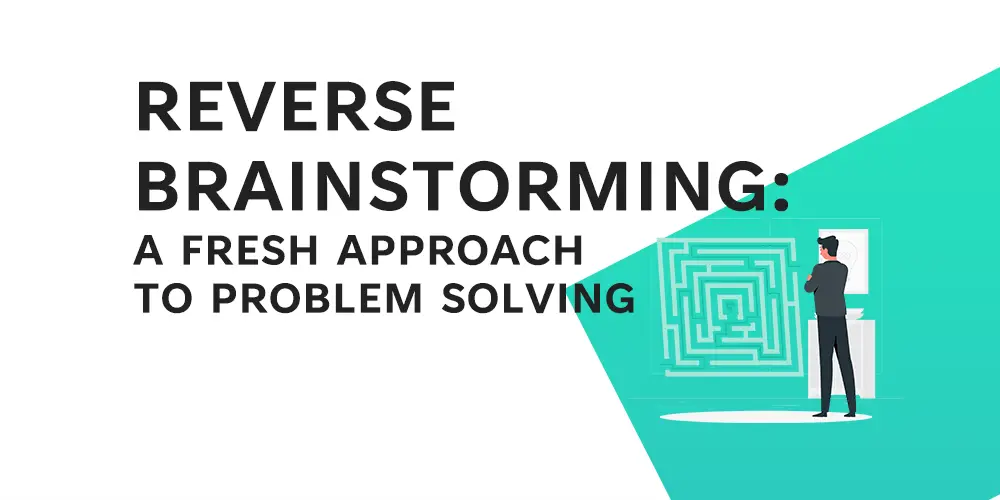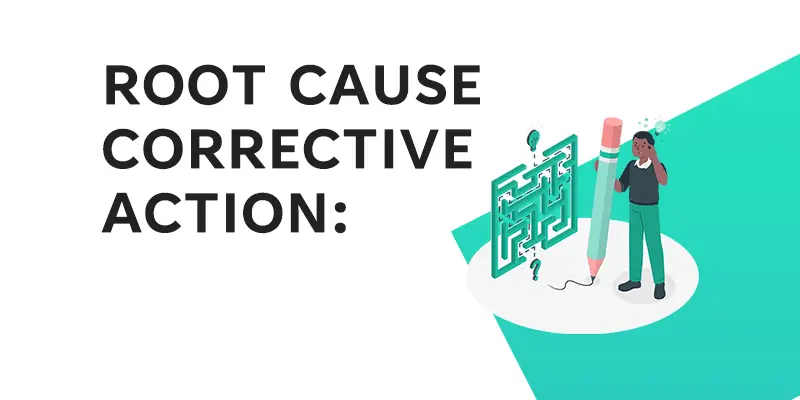Are you tired of approaching problems in the same way and finding the same solutions? It’s time to shake things up and try something new. Reverse brainstorming is a problem-solving technique that takes a novel approach to problem-solving and idea generation. Rather than beginning with potential solutions, reverse brainstorming begins with the desired outcome and works backwards to identify obstacles that must be overcome.
This approach promotes creative thinking and can result in game-changing ideas and solutions. In this blog post, we will look at the steps involved in reverse brainstorming, as well as its benefits and how to make the most of it. Reverse brainstorming is a tool that can help you unlock your full potential, whether you’re an entrepreneur, a creative professional, or simply looking for a new way to approach challenges. So let’s get started and gain a new perspective on problem-solving!
Want to consider different types of brainstorming? Check out our post on 7 Brainstorming Techniques to try
Table of Contents
What is Reverse Brainstorming?

Reverse brainstorming is a problem-solving technique that takes a different approach to coming up with new ideas and solutions. It was invented in the 1950s by marketing consultant Osborn and has since become a popular tool for businesses, organisations, and individuals seeking to approach problems in novel ways. Reverse brainstorming differs from traditional brainstorming in several key ways, and it provides several benefits that make it an appealing option for problem-solving.
Reverse brainstorming is a novel approach to problem-solving that begins with the desired outcome and then works backwards to identify obstacles that must be overcome. Instead of beginning with potential solutions, reverse brainstorming encourages people to think about the problem in a new way and come up with creative solutions to overcome obstacles.
In several ways, reverse brainstorming differs from traditional brainstorming. Individuals or groups come together to generate as many ideas as possible in traditional brainstorming. This approach is frequently associated with optimism, creativity, and a willingness to try new things. It can, however, lead to groupthink and a lack of critical thinking. In contrast, reverse brainstorming begins with the desired outcome and works backwards to identify obstacles. This approach encourages people to think about the problem in new ways, which can lead to breakthrough ideas and solutions.
What are the Steps of the Reverse Brainstorming Process?
Reverse brainstorming is a novel and effective problem-solving technique that provides a new perspective on the generation of new ideas and solutions. It begins with the desired outcome in mind and then works backwards to identify obstacles that must be overcome. The steps are as follows:
Step 1 – Define the problem:

The problem must be defined first in this process. This step is critical because it ensures that everyone understands the problem and what needs to be done to solve it. It is critical to be as specific and clear as possible to ensure that everyone is working towards the same goal.
Step 2 – Focus on the Desired Outcome:
After defining the problem, the next step is to concentrate on the desired outcome. This step is all about imagining what your ideal outcome would be and what you want to achieve. This could include anything from increased sales to improved customer satisfaction to cost reduction. It is critical to be as specific and clear as possible to ensure that everyone is working towards the same goal.
Step 3 – Generate Solutions that Prevent the Desired Outcome:

The next step is to come up with solutions to avoid the desired outcome. This is where reverse brainstorming truly distinguishes itself from traditional brainstorming. Instead of beginning with potential solutions, you begin by considering what obstacles are impeding you from achieving your desired outcome. This step can be difficult because it requires individuals to think about the problem in a new way. This step, however, can lead to the most innovative and creative ideas.
Step 4 – Reframe the solutions as New and Innovative Ideas:
The final step is to reframe the solutions as innovative and new ideas. This step entails transforming the solutions generated in step 3 into new and innovative ideas. This could include looking at an obstacle from a different perspective or devising a new and creative way to overcome the obstacle. This step is all about transforming the ideas generated in step 3 into new and innovative solutions.
Example of Reverse Brainstorming
Improving Customer Satisfaction as an Example
A retail store has low customer satisfaction ratings.
Step 1 – Define the Problem
The issue is that the retail store’s customer satisfaction ratings are low. This is reducing repeat business and overall profitability.
Step 2 – Focus on the Desired Outcome
The goal is to boost customer satisfaction and increase repeat business. The goal is to create a shopping experience that exceeds the expectations of the customer and leaves them happy and satisfied with their purchase.
Step 3 – Create Alternatives to the Desired Outcome
What are the impediments to achieving the desired result of increased customer satisfaction? Some potential roadblocks include:
- Product of poor quality
- Long waiting periods
- Unfriendly staff
- Confusing Store layout
Step 4 – Reframe the Solutions as New and Innovative Ideas
- In order to address poor product quality, the retail store could implement a quality control programme that ensures only high-quality products are sold.
- The retail store could invest in new technology such as self-checkout lanes or mobile checkout options to reduce long lines.
- The retail store could provide customer service training and incentivize friendly behaviour to improve staff friendliness.
- The retail store could create clear signage and a more intuitive floor plan to simplify the store layout.
The retail store can use the reverse brainstorming process to transform customer satisfaction barriers into innovative solutions that will help to increase customer satisfaction and improve repeat business.
The Benefits of Reverse Brainstorming
This method is a novel approach to problem-solving that has several advantages over traditional brainstorming methods. In this section, we will look at four key advantages of reverse brainstorming: it promotes teamwork and collaboration, it avoids groupthink and encourages diverse perspectives, and it improves problem-solving skills.
Encourages Creative Thinking
Reverse brainstorming promotes creative thinking by challenging people to come up with solutions to problems rather than ideas to achieve a goal. This method encourages participants to think outside the box and consider unconventional ideas, which can result in more creative and innovative solutions. Reversing brainstorming encourages a more dynamic and imaginative problem-solving process by reframing obstacles as opportunities for creativity.
Promotes Teamwork and Collaboration
The process is a collaborative process that promotes collaboration and teamwork. Participants in reverse brainstorming collaborate to identify obstacles and reframe them as solutions. This collaboration encourages participants to support each other’s ideas and fosters a sense of shared responsibility for the outcome. Reverse brainstorming can foster teamwork and collaboration, which can lead to more effective problem-solving and better outcomes.
Avoids Groupthink and Encourages Diverse Perspectives
Groupthink is a phenomenon in which individuals conform to the group’s opinions rather than expressing their own. This can result in poor decision-making and decreased creativity. By encouraging diverse perspectives and promoting independent thinking, reverse brainstorming helps to avoid groupthink. This should foster a more open and inclusive problem-solving environment by viewing obstacles as opportunities for innovation.
Improves Problem-Solving Skills
By providing a structured approach to problem-solving, reverse brainstorming helps to improve problem-solving skills. Reverse brainstorming’s four steps – defining the problem, focusing on the desired outcome, generating solutions that prevent the desired outcome, and reframing the solutions as new and innovative ideas – provide a clear and concise framework for problem-solving. Participants who use reverse brainstorming will improve their problem-solving skills and become more effective at generating innovative solutions over time.
Making the most of Reverse Brainstorming
Reverse brainstorming can be a powerful problem-solving tool, but it must be used correctly to reap its full benefits. In this section, we’ll look at four key ways to get the most out of reverse brainstorming: encourage active participation from all members, give group members time to reflect and contribute, avoid criticism and negative feedback, and keep an open mind and be flexible.
Encourage Active Participation from All Members
Active participation from all members is required for reverse brainstorming to be successful. This entails encouraging everyone to contribute ideas and participate in the conversation. It is critical to create a positive and inclusive environment in which everyone feels comfortable sharing their ideas in order to encourage active participation. This can be accomplished by encouraging open communication and fostering a nonjudgmental environment.
Allow Time for Group Members to Reflect and Contribute
Allowing time for group members to reflect and contribute is critical in reverse brainstorming. This entails giving participants time before the session to consider the problem and potential solutions. It also entails allowing time during the session for participants to share and discuss their ideas with the group. Reverse brainstorming becomes a more effective and efficient problem-solving tool when time for reflection and contribution is allowed.
Avoid Criticism and Negative Feedback
It is critical to avoid criticism and negative feedback when reverse brainstorming. This includes refraining from making any comments or taking any actions that might discourage participants from sharing their ideas or contribute to groupthink. Instead, it is critical to cultivate a positive and inclusive environment in which all ideas are valued and respected. Reverse brainstorming becomes a more productive and effective problem-solving tool when criticism and negative feedback are avoided.
Keep an Open Mind and Be Flexible
It’s critical to keep an open mind and be flexible when reverse brainstorming. This entails being open to novel ideas and approaching problems from novel angles. It also implies being open to changing your strategy if it isn’t working or if a better solution is presented. Reverse brainstorming becomes a more dynamic and effective problem-solving tool when you keep an open mind and are flexible.
Conclusion
Finally, we looked at reverse brainstorming and its advantages over traditional brainstorming. We’ve also covered the steps in reverse brainstorming, such as defining the problem, focusing on the desired outcome, generating solutions that prevent the desired outcome, and reframing the solutions as new and innovative ideas.
We also covered the advantages of reverse brainstorming, such as encouraging creative thinking, teamwork, and collaboration, avoiding groupthink and encouraging diverse perspectives, and improving problem-solving skills. Finally, covered how to make the most of the method by encouraging active participation from all members, allowing time for reflection and contribution, avoiding criticism and negative feedback, and remaining open-minded and flexible. By following these guidelines, you can maximise the benefits of reverse brainstorming and achieve better results.








